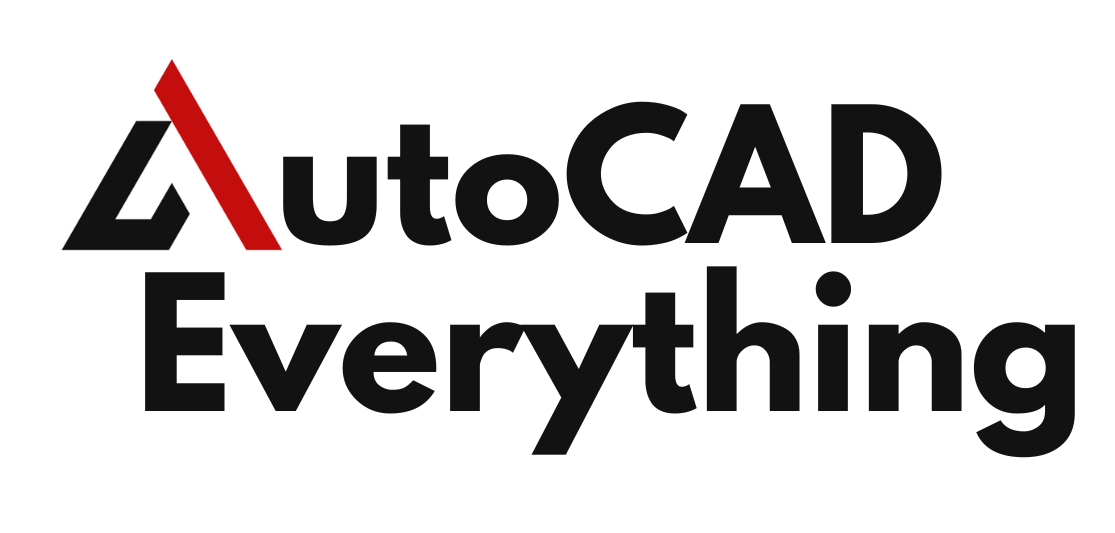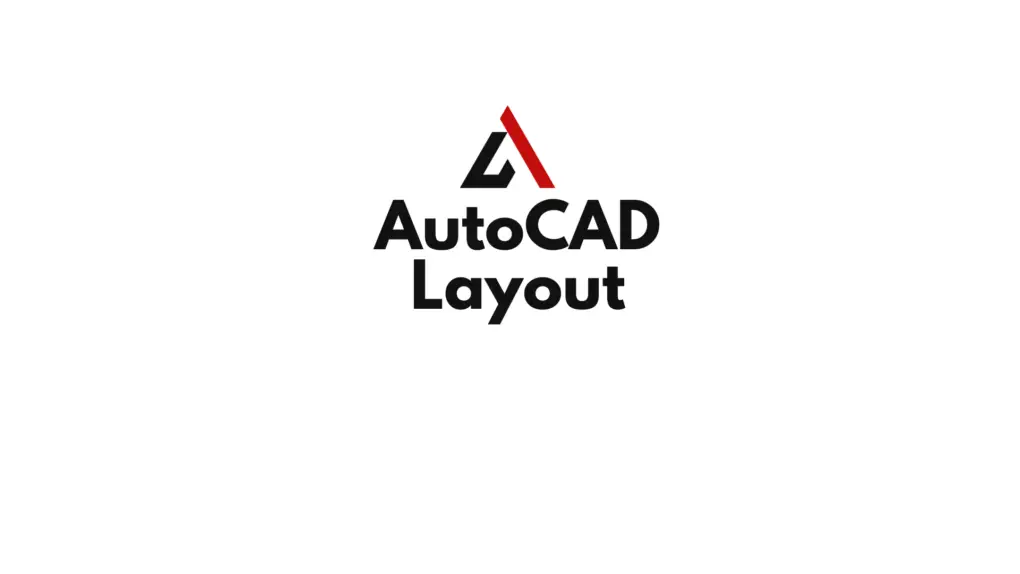In architectural design, the ability to present your work in a clean, organized, and professional manner is crucial. This is where AutoCAD layouts come into play. AutoCAD layouts offer an effective way to arrange, scale, and present multiple views of architectural drawings on a single sheet, while also enabling precise annotation, dimensioning, and title block integration. Layouts are essential for preparing your drawings for printing or sharing with clients, contractors, and collaborators.
Managing layouts in AutoCAD allows you to maintain a consistent drawing format across projects, ensuring clarity and professionalism. This article will guide you through setting up and managing layouts for architectural drawings, enabling you to optimize your workflow and create high-quality architectural presentation sheets.
Table of Contents
Introduction to AutoCAD Layouts
An AutoCAD layout is like a digital piece of paper that can hold multiple views (viewports) of your architectural drawing. Layouts are used to display 2D and 3D views of your model at various scales, along with annotations, dimensions, and other details that help explain the design.
In architectural projects, layouts allow you to:
- Organize different views: Display multiple sections, elevations, and plans on the same sheet.
- Set different scales: Have views at various scales, such as a floor plan at 1:100 and a detail view at 1:20.
- Add annotations: Provide dimensions, notes, and text to describe the drawing.
- Include a title block: Ensure the layout is complete with project information, scales, drawing titles, and other relevant data.
A well-organized layout is essential for presenting architectural drawings in a clear, readable format. Now, let’s dive into how to create and manage layouts for architectural projects.

Setting Up a Layout in AutoCAD
Creating a New Layout
When you open AutoCAD, you typically start in Model Space, which is where all the drawing and design work happens. Once the design is complete, you can switch to Paper Space to create a layout. Paper Space is where you set up your drawing sheets and organize your views.
Here’s how to create a new layout:
- Switch to Layout Tabs: At the bottom of the AutoCAD window, you will see tabs labeled Layout1 and Layout2. You can either modify these existing layouts or create a new one.
- Create a New Layout: Right-click on a layout tab and select New Layout. This will create a blank layout.
- Set the Layout Paper Size: Right-click on the new layout tab and select Page Setup Manager. In the Page Setup dialog box:
- Click Modify to choose the paper size (e.g., A1, A2, A3, or custom sizes).
- Choose the plotter/printer and configure plot style if necessary.
- Set the Drawing Orientation (landscape or portrait).
- Once everything is set, click OK.
Your new layout is now ready for further configuration, including adding viewports and a title block.
Inserting a Title Block
A title block contains important information about the project, such as the project name, architect’s details, date, scale, and sheet number. Inserting a title block ensures that your drawings are well-documented and professional.
- Insert the Title Block: Use the INSERT command to import a title block. AutoCAD often comes with pre-installed title blocks, or you can import your own custom block.
- Scale the Title Block: After inserting the title block, ensure that it fits within the layout’s boundaries. Use the SCALE tool to adjust its size if needed.
- Add or Edit Text: Modify the title block’s text fields with relevant project information using the TEXT or MTEXT tools.
By inserting a title block, you establish a professional framework that anchors the entire layout and provides essential project details.
Working with Viewports
Viewports are windows into Model Space that allow you to display different parts of your architectural drawing at various scales. Viewports can show anything from floor plans and elevations to sections and details.
Creating a Viewport
To create a viewport in AutoCAD, follow these steps:
- Switch to the Layout Tab: Make sure you’re in Paper Space by clicking on the appropriate layout tab.
- Create a Viewport: Use the MV or MVIEW command to create a viewport.
- Draw the Viewport: After typing the command, click two points to define a rectangular viewport within the layout.
- Adjust the Viewport Scale: Once the viewport is created, select it and adjust the scale using the Viewport Scale dropdown in the toolbar. You can also type a custom scale factor.
Each viewport can be set to a different scale, allowing you to present various levels of detail in your drawings. For example, you might have the main floor plan at 1:100 and a detail view of a stair section at 1:20 on the same sheet.
Managing Multiple Viewports
It’s common to have multiple viewports on a single layout to show different aspects of your design. AutoCAD allows you to customize each viewport individually, giving you control over what part of the drawing is visible and at what scale.
Here’s how to manage multiple viewports effectively:
- Lock Viewport Scale: Once a viewport is set to the desired scale, use the Properties panel to lock the viewport. This prevents accidental changes when you zoom in or out.
- Layer Management in Viewports: You can control which layers are visible in each viewport independently. For instance, you might want to show structural layers in one viewport and finish layers in another.
- Use the LAYER command and the LAYFRZ (Layer Freeze) tool to control which layers are visible in each viewport.
- Clipping Viewports: If you need a non-rectangular viewport (e.g., a circular or irregular shape), use the CLIP command to modify the shape of the viewport.
Annotating Inside Viewports
Although annotations (such as dimensions, notes, or labels) are typically added in Paper Space, there are instances where you may need to add them in Model Space through the viewport. To do this:
- Enter Model Space from Paper Space: Double-click inside the viewport to activate Model Space from within Paper Space.
- Add Annotations: Use annotation tools such as DIMENSION or TEXT to add details directly in Model Space.
Be cautious when adding annotations inside viewports, as they may not scale correctly when viewed from Paper Space. Typically, it’s better to add annotations in Paper Space.
Dimensioning and Annotating in Layouts
Dimensions, labels, and notes are critical for architectural drawings, as they communicate the design’s key details. In AutoCAD layouts, annotations are typically added in Paper Space for clarity and consistency across different views.
Dimensioning in Paper Space
Adding dimensions in Paper Space ensures they are not affected by the varying scales of viewports. Follow these steps:
- Activate the Layout Tab: Make sure you’re in Paper Space.
- Use the DIM Command: Type DIM or select the dimension tool from the toolbar.
- Add Dimensions: Click on points in the viewport to add dimensions that reference the drawing in Model Space.
By adding dimensions in Paper Space, you ensure that the dimension text is always appropriately scaled and readable, regardless of the viewport’s scale.
Adding Text and Annotations
Annotations, such as room names, material notes, or other descriptive text, should also be added in Paper Space. This guarantees that the text remains at a consistent size across the entire layout, even when the views are at different scales.
- TEXT: Use the TEXT or MTEXT command to create notes, labels, or room names.
- LEADERS: Add leaders with the MLEADER command to point to specific features in the drawing.
- Hatching: If a section or cut view is included, use the HATCH tool to fill in materials like concrete, brick, or insulation.
Managing Layouts and Sheets for Printing
Once your layout is complete, you need to prepare it for printing or plotting. AutoCAD provides a comprehensive set of tools to manage this process and ensure your drawings are printed at the correct scale and with the right formatting.
Setting Up the Page for Plotting
Before printing, it’s crucial to ensure your layout is properly set up:
- Open Page Setup Manager: Right-click the layout tab and select Page Setup Manager. From here, you can adjust printer settings, paper size, plot scale, and orientation.
- Choose the Plot Area: In the Page Setup dialog box, set the plot area to Layout to ensure that everything within the layout tab is printed.
- Select Plot Scale: Set the plot scale to 1:1, as the viewport scaling is handled separately within the layout.
- Plot Styles: Choose a plot style if necessary, such as monochrome for black-and-white printing or color for presentations.
Printing or Plotting Your Layout
Once your layout is set up:
- Use the PLOT command to open the plot dialog box.
- Double-check the plot scale, paper size, and plot style.
- Preview the drawing to ensure everything fits on the sheet correctly.
- Print to a PDF for digital sharing or send it directly to a plotter for physical copies.
By following these steps, you can ensure that your architectural drawings are printed accurately and professionally, ready for submission or presentation.
Best Practices for Layout Management
To make the most of AutoCAD layouts in architectural drawings, consider these best practices:
- Use Named Views: Save different camera angles or views in Model Space as Named Views and quickly switch between them when setting up viewports.
- Maintain a Layout Template: Create a standard layout template with title blocks, viewports, and page setups pre-configured for your office or project. This saves time on future projects.
- Control Layer Visibility: Use the Layer States Manager to save different layer configurations for each viewport.
- Keep Layouts Organized: Name your layout tabs based on the type of view (e.g., “Plan 1:100,” “Section A-A,” or “Detail 1:20”). This makes it easier to navigate large projects with multiple sheets.
FAQs
What is the purpose of layouts in AutoCAD?
Layouts in AutoCAD allow you to organize and present multiple views of your drawing on a single sheet. They are used for printing, annotating, and scaling architectural drawings.
How do I create a layout in AutoCAD?
To create a layout, go to the layout tabs at the bottom of the AutoCAD window, right-click, and choose “New Layout.” You can then adjust the paper size, insert viewports, and add a title block.
Can I have different scales in different viewports on the same layout?
Yes, each viewport in AutoCAD can have its own scale, allowing you to present different levels of detail on the same sheet.
How do I lock the scale of a viewport in AutoCAD?
To lock the scale of a viewport, select the viewport, open the Properties palette, and set the Display Locked option to “Yes.” This prevents accidental zooming or scaling.
Should dimensions be added in Model Space or Paper Space?
It’s best to add dimensions in Paper Space, as this ensures they are properly scaled and visible across different viewports.
How can I ensure my layout prints correctly?
To ensure correct printing, use the Page Setup Manager to configure paper size, plot scale, and printer settings. Always preview the drawing before plotting to ensure everything fits properly.

